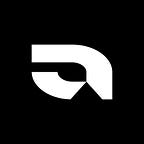Decentraland (MANA) defines itself as a virtual reality platform powered by the Ethereum blockchain that allows users to create, experience, and monetise content and applications.
In this virtual world, users purchase plots of land that they can later navigate, build upon and monetise. The platform has grown from a simple 2D experiment to a vast 3D universe since its inception in 2016. Estaban Ordano and Ari Meilich, the project’s creators, have developed a virtual world with digital goods and other configurable components. MANA, Decentraland’s ERC-20 token, may be used to purchase all of them. Users may now use interactive apps, in-world payments, and peer-to-peer communication courtesy of the platform’s evolution.
The different types of tokens governing operations in Decentraland are:
⦁ Land: A non-fungible token (NFT) used to define the ownership of land parcels representing digital real estate.
⦁ Mana: A cryptocurrency that facilitates purchases of Land and virtual goods and services used in the Decentraland.
Changes to the Decentraland software are made possible through a network of blockchain-based smart contacts that allow MANA owners to vote on policy revisions, land auctions, and new development subsidies.
How it all works?
Decentraland is a virtual reality and blockchain-based online environment. Unlike other online games, users have complete influence over the online world’s laws. Token holders may vote directly on in-game and organisational decisions through the DAO. This method impacts everything, from the sorts of things that may be traded to the DAO’s treasury investments.
In-game treasures, such as clothing, goods, and the game’s virtual real estate, LAND, are represented by non-fungible tokens. Users save these tokens in their crypto wallets and sell them on the Decentraland Marketplace to other users. To get your hands on some MANA, and buy a new facemask, you’ll need Decentraland’s native cryptocurrency.
Land and Mana
MANA is Decentraland’s native cryptocurrency, as previously stated. It serves as a digital currency and gives each MANA bearer voting power in the Decentraland DAO.
Users transform their MANA into wrapped MANA (wMANA) and lock it in the DAO to participate in the DAO’s governance. In governance proposals, each wMANA symbolizes one vote. MANA may be obtained through exchanges or the sale of collectable goods on the Decentraland Marketplace. To support its decisions and activities, the DAO has its own MANA treasury.
LAND is a non-fungible coin that symbolizes a piece of Land held by community members. It also gives voting power as part of Decentraland’s governance protocol, similar to MANA.
On the other hand, LAND does not need storage in the DAO and gives two thousand votes per LAND token. Players owning several plots can combine them into a single Estate token, which has voting power equal to the number of plots included inside it.
What is Decentraland DAO?
Decentraland’s focus on decentralization is one of its most intriguing features. Decentraland’s Land, digital assets, and developments are all controlled by the community of participants, as we’ve seen.
The project utilizes open-source code to control its regulations as a Decentralized Autonomous Organization. Proposals can be created and voted on by anybody who has staked their MANA or owns LAND. The Decentraland DAO is powered by Aragon, a DAO software solution that uses an Agent to communicate with Ethereum smart contracts.
Decentraland Use Cases
Decentraland’s developers have kept new use cases in blockchain-based communities in mind since the platform’s inception. Five critical use cases outlined in their whitepaper are:
Applications: Users may use Decentraland’s scripting language to develop apps and 3D sceneries, allowing for more complex interactions.
Content Curation: In Decentraland, neighbourhoods have formed, gathering like-minded followers and forming organic communities.
Advertising: As a result of increased player traffic in neighbourhoods, advertising companies have purchased space and erected billboards.
Digital Collectibles: In the Decentraland Marketplace, users may collect, develop, and trade NFT objects, granting them ownership rights.
Social: Communities on social media platforms and offline groups can engage in more dynamic social interactions with their peers.
There’s a potential to make money in this game, as there is in most blockchain-based games. Speculation is rampant, with some in-demand LAND fetching exorbitant prices.
Closing thoughts
When it comes to blockchain virtual-reality systems, Decentraland is rather unusual. It’s completely free to explore, so you can quickly make up your mind by logging in. Its development team has brought it from a modest project to where it is now, five years later, making it relatively mature compared to other crypto projects.
Atari just announced their partnership with Decentraland. They aim to take over a massive estate in Decentraland where gamers will be able to play some of Atari’s most popular games, including Pong, Break-out, Asteroids, Missile Command, Centipede, and many more. Individuals are flocking to the metaverse for amusement and engagement in record numbers at a time when socializing has been forced to the internet. The more material users can interact with, the more engaging (and lucrative) the metaverse grows, drawing more users and, therefore, more corporate sponsorships.
Last year the NFT market quadrupled in size, and this trend is expected to continue through 2021. Record-breaking deals have made headlines, such as Beeple’s digital NFT work, which recently sold for almost $69 million at Christie’s. People will need a place to store, display, and wear their digital assets as they continue to invest in NFTs, which will be in metaverses like Decentraland.
